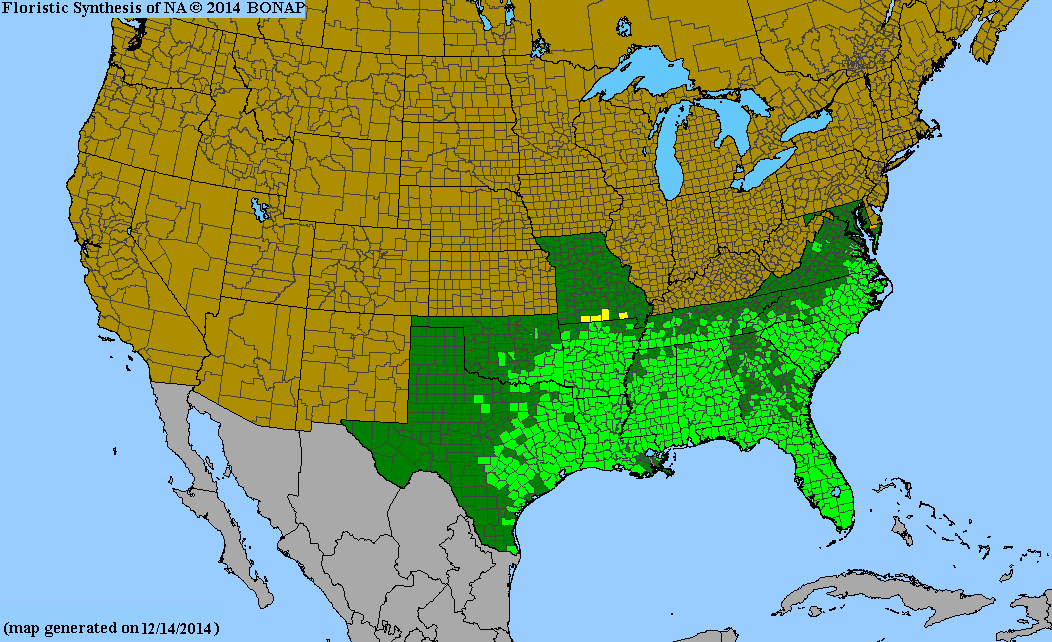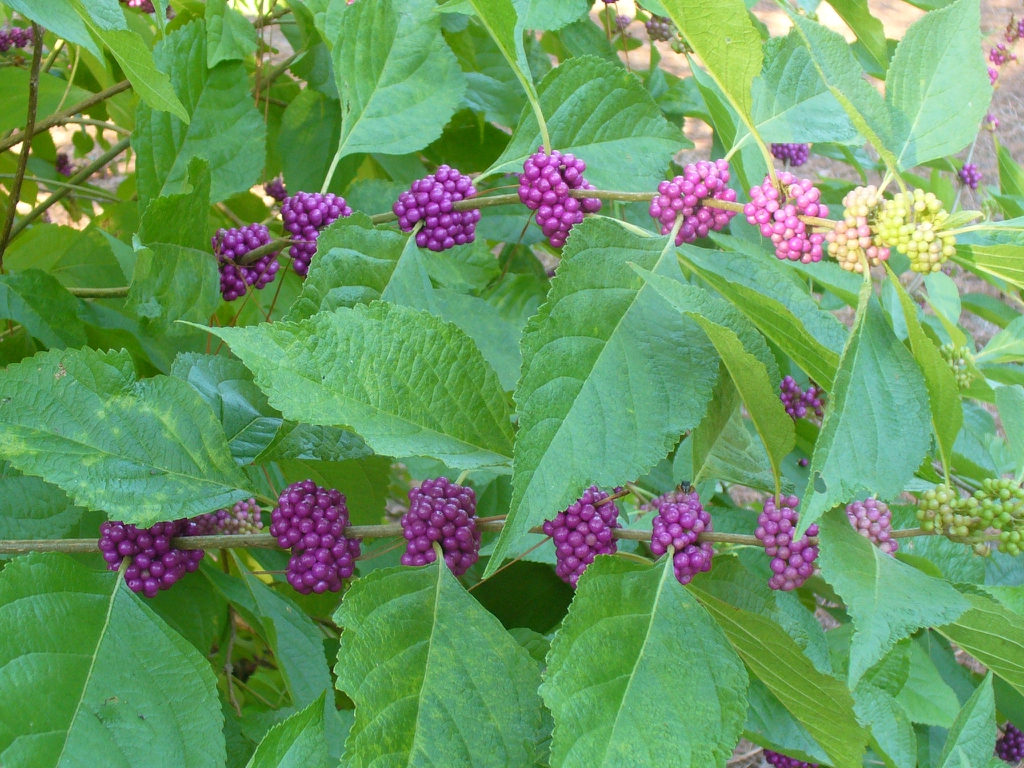Lamiaceae
American beautyberry
Callicarpa americana
Synonyms
Burchardia americana
Johnsonia americana
Plant Type
Shrub (less than 10 ft)
Life Cycle
Perennial
Typical Size
3-8 ft. tall
3-6 ft. wide
Tolerant of
Drought
Inolerant of
Poorly Drained Soil
Propagation
By seed, By cutting
Plant Propagation Notes
Seeds should be removed from the berry pulp in the fall and dried for late winter planting. Cuttings should be taken from softwood.
Plant Planting Notes
Allow at least 3 feet, and up to 6 feet, of space otherwise regular pruning will be needed.
Plants/Diseases
Relatively disease and pest free. Sometimes exhibits leaf spot.
Wildlife Benefits
Nectar/pollen source for pollinating insects, Fruit/seeds for birds
Leaves
Opposite leaf arrangement. Simple, elliptical to ovate approximately 3-6 inches long by 1-3 inches wide. Serrate margins.
Flowers
Flowers are typically a light purple/lavender, but may be white or pink. Arranged in a cyme, less than one inch.
Fruit
Clusters forming a whorl and encircling the stem. Bright purple.
Bark
The smooth bark is light brown. The slender, arching stems are square in cross section.
Toxicity
No known toxicity.
Edibility
Fruits are commonly used to make jelly

USDA Hardiness Zones
6, 7, 8, 9, 10
Light Exposure
Full Sun, Part Sun/Shade
Soil Moisture
Dry, Moist
Soil Drainage
Well-drained
Soil pH
Acidic (less than 6.0), Neutral (6.0-8.0), Basic (greater than 8.0)
Native in South Carolina?
Yes
Plant Native Habitat
Beautyberry’s native habitat is open meadows, thickets, or woodlands.
Global Conservation Status (NatureServe)
Secure (G5)
Federal Conservation Status (USFWS)
Not Listed
Distribution Notes
Common in the SC Coastal Plain and Piedmont and Rare in the Mountains

